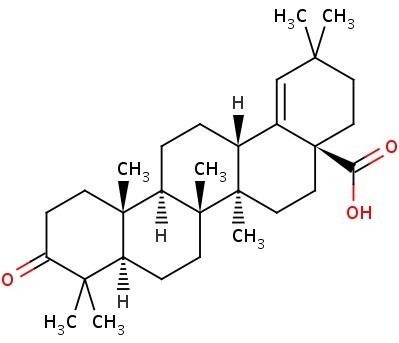Marc Abrahams's Blog, page 472
August 11, 2013
On the presumed competence of British (and other) spies
Adam Curtis, writing for the BBC, assembled a narrowly focused history of British spying agencies. He focuses on the question of competence:
The recent revelations by the whistleblower Edward Snowden were fascinating. But they – and all the reactions to them – had one enormous assumption at their heart.
That the spies know what they are doing.
It is a belief that has been central to much of the journalism about spying and spies over the past fifty years. That the anonymous figures in the intelligence world have a dark omniscience. That they know what’s going on in ways that we don’t. It doesn’t matter whether you hate the spies and believe they are corroding democracy, or if you think they are the noble guardians of the state. In both cases the assumption is that the secret agents know more than we do.
But the strange fact is that often when you look into the history of spies what you discover is something very different. It is not the story of men and women who have a better and deeper understanding of the world than we do. In fact in many cases it is the story of weirdos who have created a completely mad version of the world that they then impose on the rest of us. I want to tell some stories about MI5 – and the very strange people who worked there. They are often funny, sometimes rather sad – but always very odd.…
(Thanks to investigator Richard Baguley for bringing this to our attention.)

To Simply Examine the Complexity of the Law
Can you, in some simple way, measure how complex a country’s legal system has gotten? This 41-page study perhaps does exactly that, more or less:
“Measuring the Complexity of the Law: The United States Code,” Daniel Martin Katz [pictured here] and Michael James Bommarito II, SSRN report #2307352, August 1, 2013.
The study comes equipped with 97 footnotes. Here is an example of that — or rather half an example. This is the first half of footnote #11:
“This implies some sort of ‘scaling’ relationship that could be evaluated by comparing some reasonably accepted measure of societal complexity with that of legal complexity. There is unlikely to be strict coupling between these two objects as there are often lags between changes in societal circumstances and changes in the relevant rule environment. Indeed, an important question for scholars of institutional design is how to create second-order rules that can help reduce this lag by creating triggers that would automatically yield reconsideration of the existing rule environment. Identifying the precise conditions that should trigger change in the landscape is anon-trivial matter as the rule environment should change when necessary but otherwise hold the status quo (so as to enforce prior expectations). Thus…”

August 10, 2013
Moronic acid
Yes, there is a moronic acid:
“Moronic acid, a simple triterpenoid keto acid with antimicrobial activity isolated from Ozoroa mucronata,” M. Hostettmann-Kaldas and K. Nakanishi, Planta medica 37.12 (1979): 358-60.
Unwhimsically, it is not unstructured. The structure looks more or less like this:
(Thanks to investigator Deborah Blum for bringing this substance to our attention.)
BONUS: Anti-Herpes Simplex Virus Activity of Moronic Acid
BOMUS: Traumatic acid

August 9, 2013
Stupidity – special issues
 It was back in May last year that Improbable drew attention to the forthcoming special edition of the journal ‘parallax’ – the ‘Stupidity’ issue. We are delighted to announce that it’s no longer forthcoming, as it’s now been published. The journal carries at least four scholarly papers which focus directly on stupidity – and which mention the work of many prominent thinkers who have had some impact in the field – Henri Bergson, Edmund Husserl, Theodor Adorno, Roland Barthes, Jaques Lacan, Jeremy Bentham, and Karl Marx – but, perhaps most importantly Gustav Flaubert (pictured). For it was he (explains mevr. prof. dr. Mieke Bal of the Faculteit der Geesteswetenschappen at the Universiteit van Amsterdam, The Netherlands, in her paper ‘Not So Stupid‘) who was “… the undisputed master of the thing, or idea, called stupidity.” Indeed, informs the professor : “Flaubert spent his working life staging stupidity.” But notwithstanding parallax’s admirable efforts in furthering stupidity studies, drawing any firm conclusions about the concept in general could, however, be problematic – as it was no less than Flaubert himself who also stated : “Stupidity consists in wanting to draw conclusions.” (quoted in : Stupider and Worse: The Cultural Politics of Stupidity, by David Jenemann).
It was back in May last year that Improbable drew attention to the forthcoming special edition of the journal ‘parallax’ – the ‘Stupidity’ issue. We are delighted to announce that it’s no longer forthcoming, as it’s now been published. The journal carries at least four scholarly papers which focus directly on stupidity – and which mention the work of many prominent thinkers who have had some impact in the field – Henri Bergson, Edmund Husserl, Theodor Adorno, Roland Barthes, Jaques Lacan, Jeremy Bentham, and Karl Marx – but, perhaps most importantly Gustav Flaubert (pictured). For it was he (explains mevr. prof. dr. Mieke Bal of the Faculteit der Geesteswetenschappen at the Universiteit van Amsterdam, The Netherlands, in her paper ‘Not So Stupid‘) who was “… the undisputed master of the thing, or idea, called stupidity.” Indeed, informs the professor : “Flaubert spent his working life staging stupidity.” But notwithstanding parallax’s admirable efforts in furthering stupidity studies, drawing any firm conclusions about the concept in general could, however, be problematic – as it was no less than Flaubert himself who also stated : “Stupidity consists in wanting to draw conclusions.” (quoted in : Stupider and Worse: The Cultural Politics of Stupidity, by David Jenemann).
NOTE: The (public domain) picture above is a photo-representation of Flaubert taken in the late 1870s, but his bow tie has been foolishly manipulated by Improbable, for which we apologise in advance.
ALSO SEE: Annals of Improbable Research special issue on stupidity (and randomness) May/June 2012.

August 8, 2013
“Mere Exposure to Bad Art” and The Museum of Bad Art
 A new study may be of special interest to anyone who visits The Museum of Bad Art.
A new study may be of special interest to anyone who visits The Museum of Bad Art.
The study is
“Mere Exposure to Bad Art,” Aaron Meskin, Mark Phelan, Margaret Moore, and Matthew Kieran, British Journal of Aesthetic, vol. 53, no. 2 (2013): 139-164. The authors, at the University of Leeds, Lawrence University, and the University of Tennessee, explain:
“This paper addresses the interaction between mere exposure and the quality of the artworks to which we are exposed. It focuses on an experiment we conducted to test whether mere exposure increases or decreases liking for bad visual artworks. The results indicate that mere exposure to bad art makes people like it less.”
Kelsey Campbell-Dolleghan, in Gizmodo, essays upon the study, with the headline “How Thomas Kinkade Helped Prove That Art Can Be Scientifically Bad“.
(Thanks to investigator Charles Vincent for bringing this to our attention.)

Clowns and/or health
 Linda Rodriguez McRobbie writes, on the Smithsonian blog, about “The History and Psychology of Clowns Being Scary“:
Linda Rodriguez McRobbie writes, on the Smithsonian blog, about “The History and Psychology of Clowns Being Scary“:
Even the people who are supposed to like clowns—children—supposedly don’t. In 2008, a widely reported University of Sheffield, England, survey of 250 children between the ages of four and 16 found that most of the children disliked and even feared images of clowns. The BBC’s report on the study featured a child psychologist who broadly declared, “Very few children like clowns…”
Here’s further info, from the Improbable Research files, about clowns — especially medical clowns, but also corporate clowns:
 The Clown, The Kids, the Botulinum Toxin
The Clown, The Kids, the Botulinum ToxinMedical inexplicacality reported (clown IVF)
Ministry of Clowns
Bubbles, balloons and maths clowns—oh my! (she says)
Calculations: Insurance for clowns
The truth behind the Bozo Van
Corporate Tiers of a Clown

Durian and paracetamol, mixed in rats
What happens when, for whatever reason, you feed both durian — the fruit with a smell that overpowers some people — and the painkiller paracetamol, mixed in rats, and from time to time take the rectal temperature of those rats? This study explores that question:
“Hyperthermic effects of Durio zibethinus and its interaction with paracetamol,” Y.A. Chua, H. Nurhaslina, and S.H. Gan, Methods and Findings in Experimental Clinical Pharmacology, 2008 Dec;30(10):739-43. The authors, at Management & Science University, Kelantan, Malaysia, explain:
“Because durian (Durio zibethinus), which is known in Southeast Asia as “the king of fruits”, is thought to have special body-warming properties, it should not be consumed with paracetamol due to a risk of toxic effects. The claim of warming properties, however, has not been scientifically proven. This study was conducted to investigate durian’s hyperthermic effect and its toxicity when consumed together with paracetamol in rats…. Rectal temperature, systolic blood pressure and serum alanine aminotransferase (ALT) levels were taken from each rat at baseline and after the various administrations at 1, 2 and 5 h…. Rats receiving the durian-paracetamol combination showed a significant drop in body temperature, which may explain the belief that the two mixtures are toxic.”
(Thanks to investigator Yeong-chuan Lim for bringing this to our attention.)
BONUS: ”Scientists smell success with durian wine” [Reuters report]:

The frog and the video ants
Thanks to investigator Margot Button for bringing this to our attention:
BONUS: The classic study by Jerry Lettvin et al.: “What the Frog’s Eye Tells the Frog’s Brain”
BONUS (unrelated): Gorb’s ”Elastic modulus of tree frog adhesive toe pads“

August 7, 2013
Architects dressed as their buildings
Architects of important landmarks dressed as their designed buildings at Beaux- Arts Ball. They include, left to right, Leonard Schultze as the Waldorf-Astoria, William Van Alen as the Chrysler Building, Ely Jacques Khan as the Squibb Building, Ralph Walker as the Wall Street Building, Arthur J.Arwine as a low pressure heating boiler, A. Stewart as the Fuller Building and Joseph Freelander as the Museum of the City of New York. They all wore helmet like constructions of the building they had designed. 23 January 1931.
Click on the image to be whisked to the Critical Past web site, where you can watch the video.
(Thanks to Polly-Vous Francais for bringing this to our attention.)

To drink smoothies if you have teeth, or not to…
 Does one dare to drink a smoothie, if one has one or more teeth? A recent investigation bears on that question:
Does one dare to drink a smoothie, if one has one or more teeth? A recent investigation bears on that question:
“The effects of smoothies on enamel erosion: an in situ study,” Hanein Ali, D. Clin. Dent thesis, 2012, University of Leeds. The author reports:
“Conclusion: Smoothies are acidic and have high TA levels. Innocent® strawberries and bananas smoothie had an erosive potential to the teeth. However, its erosive effect was significantly less compared to citric acid after 21-days pH cycling protocol using an in situ model.”
 The study has just made a new appearance, transformed from a thesis into a dental journal paper, having acquired a co-author and (presumably — we have not seen the new version in full) revisions:
The study has just made a new appearance, transformed from a thesis into a dental journal paper, having acquired a co-author and (presumably — we have not seen the new version in full) revisions:
“The effects of smoothies on enamel erosion: an in situ study,” Hanein Ali [pictured here] and Jinous F. Tahmassebi, International Journal of Paediatric Dentistry, epub August 4, 2013.
(Thanks to investigator Adrian Smith for bringing this to our attention.)
BONUS (probably unrelated): Does one dare to eat a peach?

Marc Abrahams's Blog
- Marc Abrahams's profile
- 14 followers





